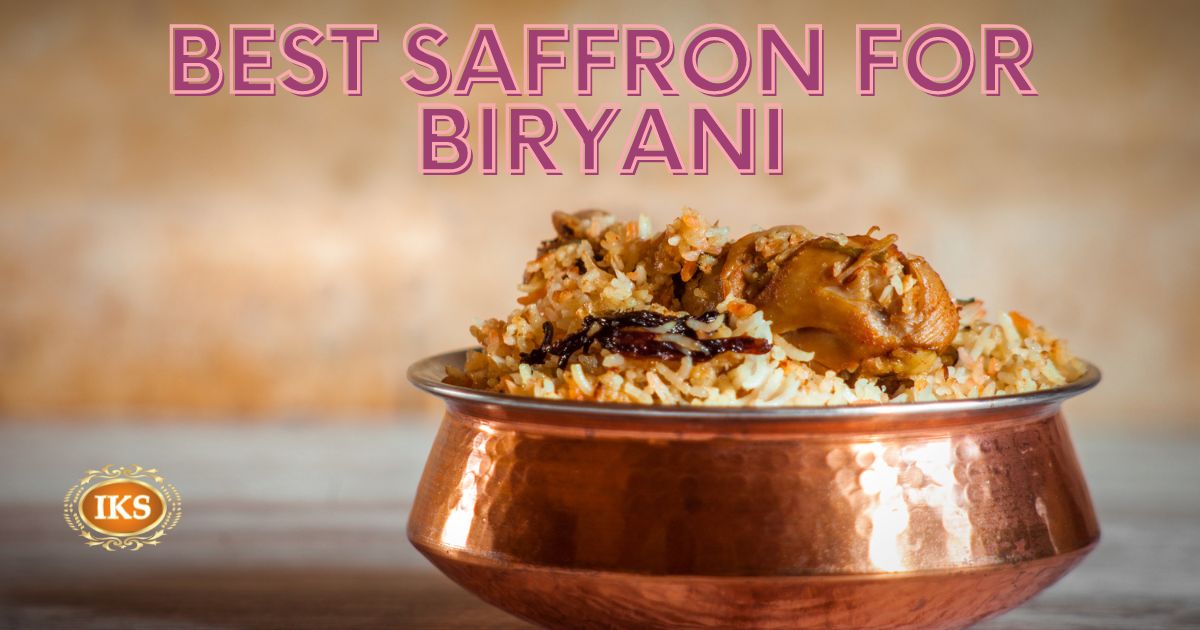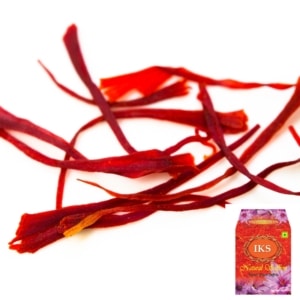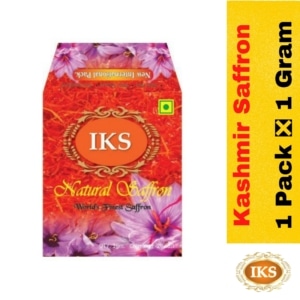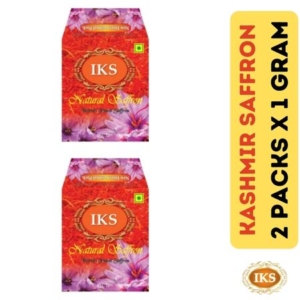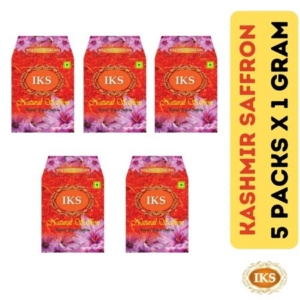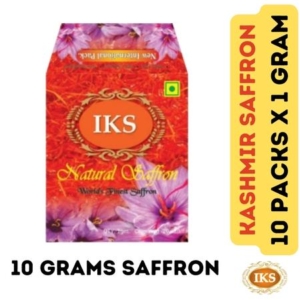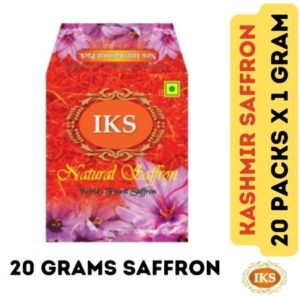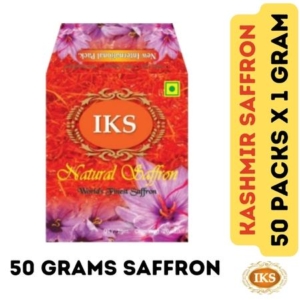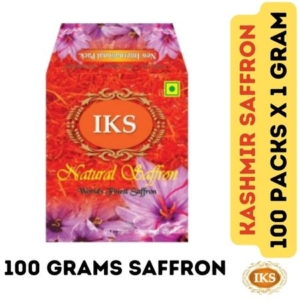Best Saffron for Biryani
Best Saffron for Biryani – Saffron is an extraordinary and essential spice in Indian cooking, known for its flavor, aroma, and captivating red color. It not only enhances the taste of dishes but also offers various health benefits.
Saffron for Biryani Online
When it comes to buying Saffron (Kesar) for your biryani, look no further. We provide authentic and GI tag-certified saffron, ensuring the highest quality for your delightful biryani. Our saffron is carefully handpicked from the finest farms in Pampore Kashmir, India, situated on the banks of the Jhelum river, the renowned original source of this precious spice.
Apart from its culinary significance, saffron boasts several medicinal properties. It contains bioactive compounds like crocetin, crocin, and picrocrocin, which offer remarkable advantages ranging from improving mental health to reducing insulin resistance. By incorporating saffron into your diet, you can enhance your well-being and experience a positive impact on your life.
Buy Kesar for Biryani
To obtain the best saffron for your biryani, simply visit our online store. With just a click, you can have access to the finest quality saffron, ensuring an authentic and delightful experience for your taste buds.
Choose our saffron, sourced from the best farms in Pampore Kashmir, and elevate your biryani to new heights of flavor and aroma. Experience the true essence of this precious spice and savor the richness it brings to your culinary creations.
Biryani: The Ultimate Indian Comfort Food
Biryani is the ultimate comfort food for Indians, comparable to how Mac-n-Cheese is cherished by Americans. This delightful dish, whose name derives from the Persian term for rice, ‘Birinj,’ has its origins rooted in India.
While the exact origin of biryani is a topic of debate, some believe it originated in the Mughal centers of North India, while others attribute its introduction to Arab traders who brought pilaf variations to South India. Regardless of its origin, biryani has become a beloved and flavorful dish that brings comfort to countless people.
If you’ve ever noticed, most biryanis boast vibrant hues of red, orange-red, or yellow. This beautiful coloring comes from the addition of saffron, also known as Kesar. Unlike chemical food dyes like FD and C Yellow No. 5, saffron offers a natural alternative. Synthetic dyes may appear harmless, but they can potentially trigger allergies.
On the other hand, Kesar is hypoallergenic, meaning it is highly unlikely to cause any allergic reactions. Moreover, it imparts a lovely, natural yellow tint to dishes, enhancing their visual appeal and adding to their overall charm.
Biryani recipe: Indian Saffron Rice Recipe
Preparing Biryani is an art that comes in two main varieties: vegetarian and non-vegetarian. You might be wondering if veg biryani is just another name for pulao. Well, the answer is no. Unlike biryani, pulao is not cooked for an extended period, and it tends to be a drier rice dish with less gravy.
Biryanis are further categorized based on their regional origins, such as Lucknowi or Awadhi biryani, Hyderabadi biryani, Kolkata biryani, Dindigul biryani, Memoni biryani, Thalassery biryani, Malabar biryani, and Ambur biryani.
Let’s dive into the recipe for chicken biryani cooked in the dum pukht style.
Start by marinating the chicken in a bowl with a mixture of garlic, green chili, ginger paste, curd, cumin powder, ground black peppercorns, red chili powder, and coriander powder. Allow the chicken to marinate for at least an hour.
Biryani is traditionally made with white rice, preferably Basmati rice, although you can also use regular rice or even brown rice. Once the rice is cooked, strain the water away.
In a stockpot, bring some water to a boil with a pinch of salt, bay leaves, green cardamoms, cloves, and a dash of oil. Rinse the rice before soaking it, and then add it to the boiling water. Alternatively, you can use a rice cooker to cook the rice.
In a separate pan, heat ghee or clarified butter and add spices like cloves, green cardamoms, bay leaves, black peppercorns, nutmeg, star anise, and cinnamon. Sauté the spices until they become aromatic. Then, add minced ginger and garlic, either directly or in the form of a paste.
Sauté for a few seconds before adding julienned onions and continue cooking until the onions turn golden brown. Next, add spice blends such as red chili powder, cumin powder, powdered garam masala, coriander powder, a pinch of turmeric, and Kashmiri chili powder.
You can also include store-bought chicken masala and biryani masala. Add the marinated chicken to the mixture, sauté for a while, and then pour in a little chicken broth or chicken stock. Let it cook for a few minutes, stirring occasionally. If you don’t have chicken broth or stock, you can use hot water as a substitute.
In another pan, caramelize some onions.
Once the chicken is cooked, it’s time to assemble your biryani. While the best way to make biryani is in a clay pot, you can also use a saucepan or stockpot.
Begin layering the biryani. Start with a layer of rice, followed by a layer of chicken, and then another layer of rice on top. Sprinkle caramelized onions, chopped mint, and cilantro or coriander on each layer.
Continue this layering process step by step until you reach the final layer of rice. Finally, garnish the top layer with more caramelized onions, mint, and cilantro or coriander.
Enjoy your flavorful and aromatic biryani! Serve it hot with a side dish of ‘kachumber’ or raita. To make raita, dice onions, tomatoes, mint, and cilantro or coriander, and mix them with 1/4 cup of curd (yogurt).
Biryani is a delightful gluten-free way of cooking rice that truly celebrates the flavors and richness of Indian cuisine.
How to make Saffron Water for Biryani?
To make saffron water for Biryani, take 10 to 12 strands of this vibrant red spice and place them in a cup of water. Add a pinch of sugar and salt to enhance the flavors.
Alternatively, you can use milk instead of water. In a cup, soak a pinch of saffron strands in 3-4 tablespoons of milk. This saffron-infused milk will be used to sprinkle on the top layer of rice.
Next, heat a piece of coal until it turns red hot. Place the hot coal in a small bowl and position the bowl on top of the rice. Add a spoonful of ghee or butter before closing the pot’s lid tightly.
Seal the lid with flour dough to ensure that the heat remains trapped. Cook the Biryani on low heat for an extended period, using the dum pukht style.
Serve the Biryani hot, accompanied by a side dish of ‘kachumber’ or raita. To prepare the raita, dice onions, tomatoes, mint, cilantro, or coriander, and mix them with 1/4 cup of curd (yogurt).
Biryani is a delightful gluten-free way of cooking rice that truly celebrates its flavors. It’s not just a rice preparation; it’s a culinary celebration!
Why Saffron is used in Biryani?
Saffron is used in Biryani because of its exceptional quality that chefs rely on. It not only enhances the aroma but also imparts a beautiful natural color to the rice, making it visually appealing.
The enticing aroma and coloring effects of saffron elevate the overall experience of enjoying Biryani, adding a touch of indulgence to the dish.
How much Saffron should be used in 1kg of Mutton Biryani?
The amount of saffron to be used in 1kg of Mutton Biryani depends on the quality of saffron you are using. When preparing 1kg of Mutton Biryani with the same ratio of mutton, rice, curd, and onions, it is important to consider the authenticity of the saffron you purchase.
Many people unknowingly use low-quality saffron, which may not provide the desired results. However, if you choose our IKS Saffron, which is a genuine and certified saffron with a GI tag, the recommended amount would be ten to twelve strands or threads soaked in a cup of milk for at least 30 minutes.
For the best outcome, it is advisable to soak this delightful red spice overnight. This will ensure that your Biryani is infused with a superior aroma, taste, and color, enhancing the overall experience of the dish.

